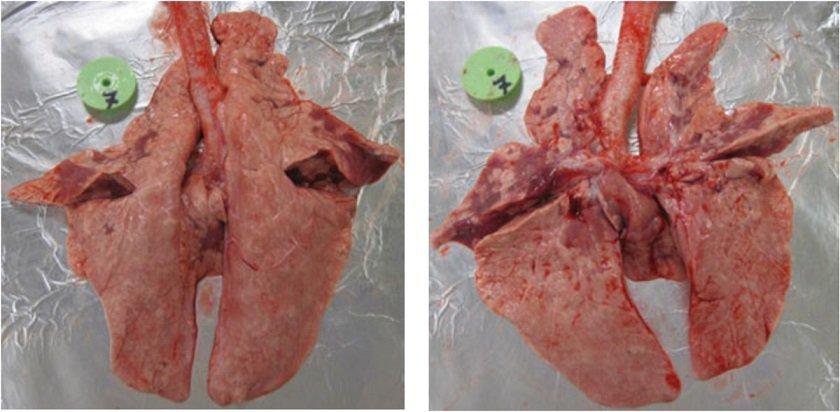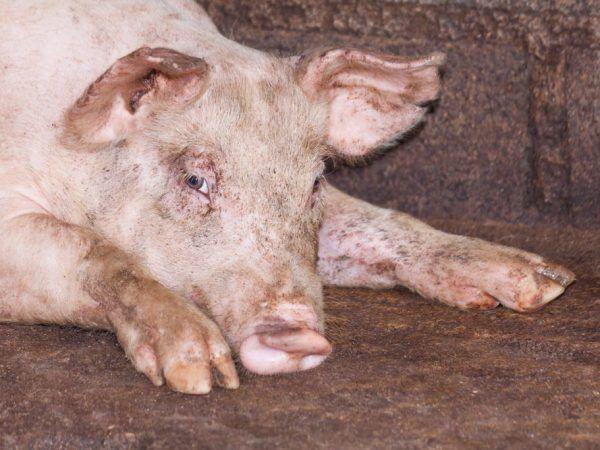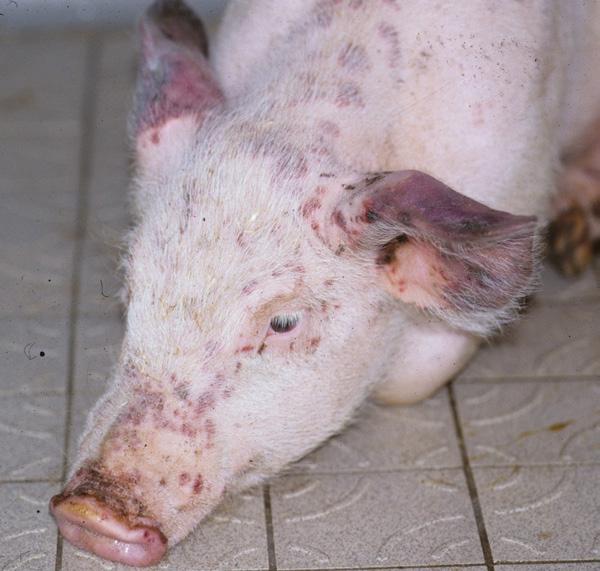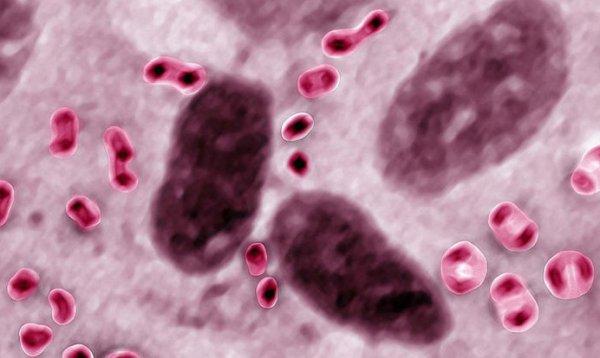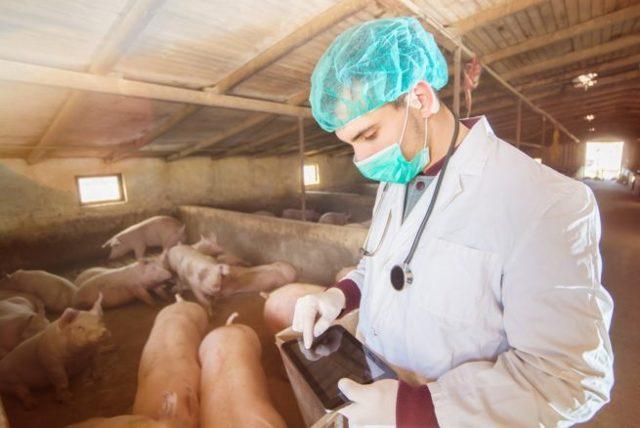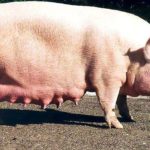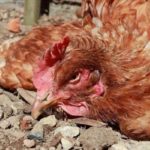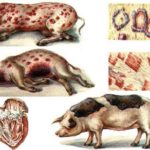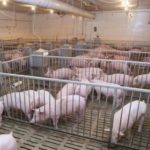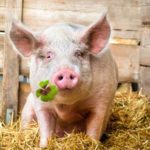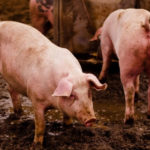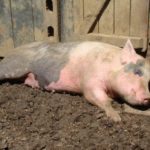Keeping pigs on farms in crowded conditions often leads to rapid infection of the entire livestock with infectious diseases. One of the most dangerous diseases of pigs is pasteurellosis. A short incubation period, improper housing conditions, lack of vaccination and preventive protection can cause the loss of a significant part of the pig population.
What kind of disease is this
The disease is caused by an infectious pathogen - Pasteurella multicida. The pathogen was identified and described by Pasteur, and the disease was named after him.
Penetrating into the body, the rod reaches the lymph and begins to actively multiply. Toxins produced as a result of the vital activity of Pasteurella multicida increase vascular permeability and cause inflammation of the mucous membranes and lymph nodes. Most bacteria accumulate in the lungs, which are rich in oxygen. The capillaries are damaged, septicemia and swelling of the subcutaneous tissue and intermuscular tissues are recorded. In severe forms of pasteurellosis, necrotic foci form in the lungs and other organs.
In pigs, multiple lesions of the body are recorded - changes in the joints, mucous membranes of the eyes, and disturbances in the gastrointestinal tract. The most severe forms develop in piglets, whose mortality rate is 75-100%. The mucus blocks the respiratory tract, the pigs sneeze and cough, the infection spreads throughout the livestock and is quickly transmitted from sick individuals to healthy ones.
Information: pig pasteurellosis is characterized by seasonality, epidemics are usually recorded in early spring and autumn. The disease is widespread in the central part of Russia.
Sources and causes of the disease
Factors provoking the epidemic are:
- crowding of pigs indoors;
- excessive air humidity;
- incorrectly chosen diet, lack of vitamins;
- improper maintenance - dirt in the pigsty, rare removal of manure (the stick remains active in manure for up to 72 days);
- a decrease in immunity after vaccinations against infectious diseases;
- weakened livestock, low immunity in pigs.
Most often, pigs become infected from a sick individual that appears on the premises. Other sources of infection are:
- carriers of the bacilli (many pigs show resistance - they themselves do not get sick, but can infect others);
- bloodsucking insects;
- rodents;
- other domestic animals (rabbits, chickens);
- feed, water, soil, containing Pasteurella multicida;
- feces of sick animals that have not been removed from the pigsty.
Pigs can become infected through airborne droplets (they inhale air containing the secretions of sick animals) and by eating contaminated food or water. Some pigs become infected through the skin through insect bites or minor injuries. More often than others, pigs who have had other infections and have lost their immunity suffer from pasteurellosis.
Symptoms and forms of the disease
The incubation period depends on the form and ranges from 1 to 14 days. The development of the disease in pigs can be detected by the following signs:
- feverish condition;
- temperature rise - up to 41° and above;
- inflamed skin and mucous membranes of the eyes;
- signs of intoxication - shortness of breath, loss of appetite, lethargy;
- joint inflammation, swelling, pain;
- mucus in the nasal passages, coughing, sneezing.
There are septic (hemorrhagic septicemia) and secondary forms of the disease. The septic type has the following flow forms:
- Super acute. Rapid increase in signs of intoxication, sharp rise in temperature, heart failure. Death of the animal within 1-3 days.
- Spicy. Catarrhal signs - cough, mucus from the nose, bluish skin develops, shortness of breath. Death in 3-8 days. With timely treatment, survival rate is up to 40%.
- Subacute. Pigs experience gastrointestinal disturbances, diarrhea, pneumonia, and cyanosis.
- Chronic. Over time, the temperature normalizes. Pigs lose weight, cough persists, and joint changes occur. The condition lasts up to 1.5-2 months, up to 70% of sick pigs die.
The secondary form develops after infections in pigs; it is often not possible to diagnose it in time.Most animals die within a week from the onset of the disease.
Diagnostic methods
It is difficult to diagnose the disease on your own; only experienced pig farmers can do it. When the chest is compressed, bluish spots remain on the skin of pigs, which indicate damage to the capillaries and congestion. Pigs experience severe pain when pressure is applied.
Diagnostics include:
- study of the clinical picture;
- taking into account the epidemiological factor;
- excretion of the pathogen - through blood, mucus, pus from abscesses, cerebrospinal fluid.
Sowing is carried out in laboratory conditions using rabbits, mice, and pigeons. The carcasses of dead animals must be examined to confirm pasteurellosis. It is important to differentiate the disease, since several infections (erysipelas, salmonellosis, anthrax) occur with a similar clinical picture.
Methods for treating porcine pasteurellosis
The first step in treatment is to isolate sick pigs and provide comfortable living conditions with enhanced, balanced nutrition. For treatment use:
- Anti-pasteurella serum. It is administered along with antibiotics, to which pasteurella is sensitive.
- Antibacterial drugs. Long-acting substances are used (dibiomycin, ecmonovocillin). Antibiotics of a number of penicillins, tetracyclines, cephalosporins, and sulfonamides are also used.
- Solutions of glucose or chloride to restore water and electrolyte balance.
- Vitamins.
- Symptomatic therapy. To treat developed cardiac disorders, Mildronate or other drugs are used.
For severe cases, blood transfusions are used, and for breathing problems, inhalations are used.
Quarantine measures are being introduced to protect against the spread of infection:
- isolation of contact pigs - import-export, walking is prohibited;
- vaccination against the disease and preventive antibiotic therapy, especially in piglets;
- disinfection of the pigsty, regular cleaning;
- burning of dead individuals.
The quarantine center is closed after 14 days; if pasteurellosis has been stopped, no new cases appear.
Vaccine against the disease
Vaccination helps prevent mass infection of pigs. Piglets are vaccinated at the following times, making intramuscular injections:
- 12-15 days from birth, if the sow does not have immunity;
- 30 days if the mother is vaccinated.
Repeated vaccination against the disease is carried out after 35-40 days. To protect livestock from pasteurellosis, several types of vaccines have been developed, including associated ones (PPS, PPD against salmonellosis, cocci).
The effect of vaccination lasts up to six months, then pigs are vaccinated again to maintain immunity and prevent disease.
General preventive measures
Vaccines do not provide a 100% guarantee against infection, although they protect pigs well from pasteurella infection. Prevention measures against pasteurellosis:
- vaccination of the entire livestock in a timely manner;
- regular disinfection of premises where sick pigs appeared;
- in case of illness - compliance with quarantine measures;
- do not import animals from problem farms;
- upon import - placing animals in quarantine;
- regular inspection;
- keeping pigs clean, regular removal of manure;
- refusal of surgical procedures on the farm (castration);
- avoiding contact with animals from other farms, stray or wild animals;
- extermination of rodents and insects – frequent spreaders of the disease;
- nutritious nutrition to support immunity.
The best way to prevent any disease is vaccination and proper housing conditions. The costs of vaccines against pasteurellosis are recouped by healthy and vigorous livestock and a high-quality product. Don't forget that humans can also become infected with pasteurella, so protecting pigs will help keep farm staff healthy.

